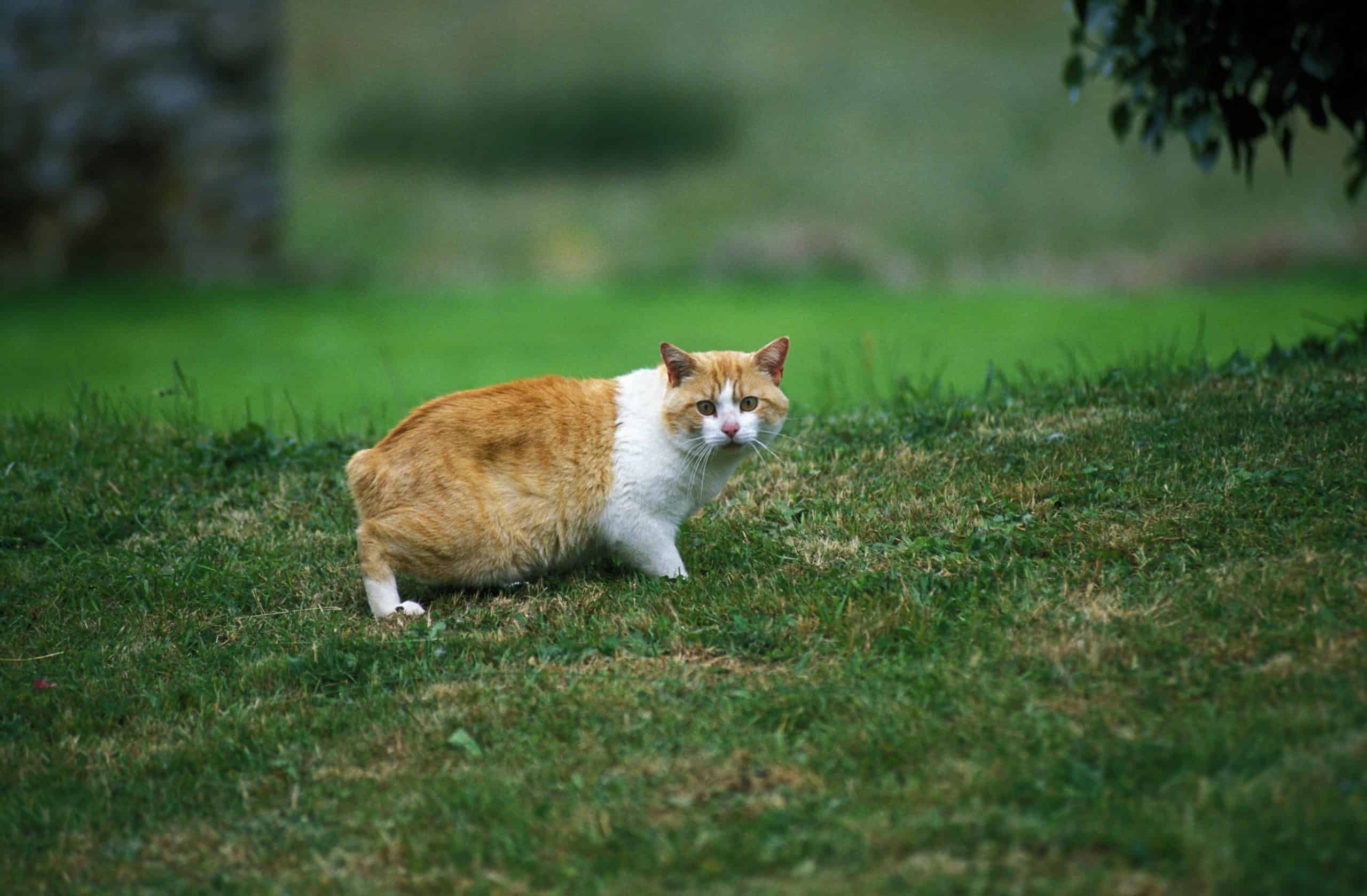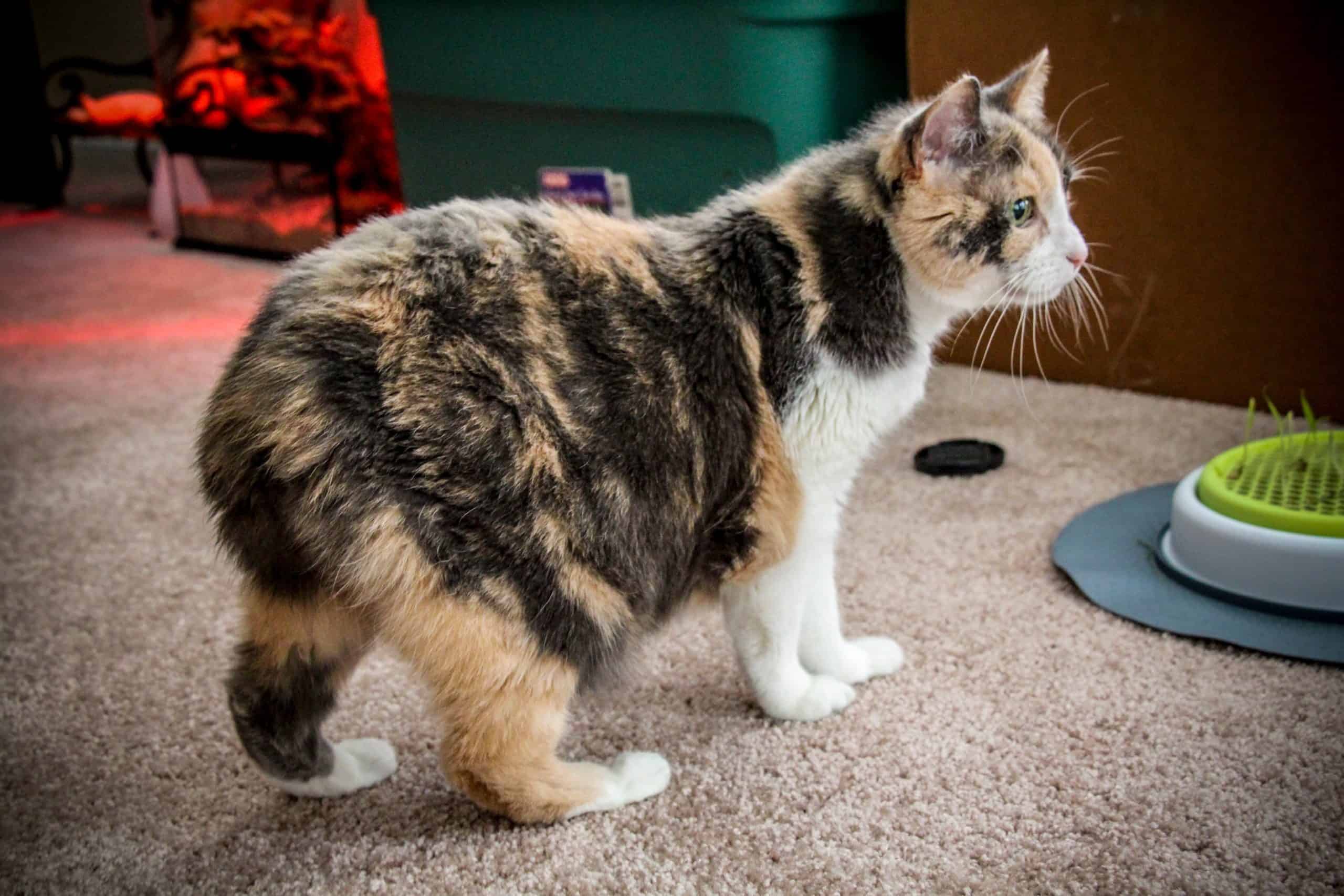The Manx cat might look like your average tabby or even calico from the front, but take a look from the back, and you'll see they're one of the most unique cat breeds alive. That esteemed title is all thanks to their missing tails. That interesting physical feature automatically attracts curiosity, but it's the Manx cat's friendly personality that makes people truly fall in love. These cats enjoy nothing more than being with people, and we're always happy to oblige.
Want to learn more about the Manx cat breed? Check out these interesting facts about this tailless feline.
Their missing tails make them truly unique.
While the Manx is the only cat breed born entirely tailless, not every kitten has this distinguishing characteristic. Having no tail is a dominant gene that most of this breed possess. But every now and then, a cat will be born with a tail just like any other feline breed. These cats are called "longies," and while they possess all the other traits of their breed, they are not accepted for showing purposes. Longies aren't exactly rare, but it's much more common for a Manx to be born with either no tail at all or a small stump of a tail. Those with tail stumps are appropriately called "stumpies," and those with no tails at all are called "rumpies." It's also possible to have a "rumpy riser" if the cat in question has a slight bone protuberance at the end of its spine. Breed Fact: In the show world, only rumpies and risers are allowed to compete.
Manx cats have other interesting physical traits.

Manx cats are people cats.
Besides their unique physical characteristics, Manx cats also charm humans with their affectionate personalities. Most of these house cats are playful and love to please their people. They're the type of cat that will follow you around the house and jump into your lap as soon as you sit down. Your Manx is also especially intelligent. They're often trained to do tricks, and can even learn a few skills on their own. Don't be surprised if your Manx learns to open cabinet doors or even turn on faucets. That intelligence and inquisitive nature can get them into occasional mischief, but with those big eyes, they don't stay in trouble for long.
They're island cats at heart.
The history of the Manx Cat is largely speculative. There are two things experts seem to agree on. One is that they originate from the Isle of Man off the coast of Britain. The second is that when they first got to the island, they still had their tails. One of the theories is that the breed got its start when a few cats aboard the Spanish Armada managed to swim to safety when the ship sunk in 1588. Others believe traders going back and forth from Japan picked up a few Japanese corkscrew cats. Those cats set up shop on the island, and their isolated genetics did the rest. 
They're one of the original cat breeds.
As more cats were born without tails, the cats on the Isle of Man eventually formed their own breed. People started taking them off the island, and breeding programs protected what is now considered to be the breed standard. They were one of the founding breeds that started the Cat Fanciers Association in 1906, and Americans jumped on the Manx bandwagon in the early 1930's. Historical Fact: A Manx named Bonhaki was named the first Manx champion in London in 1900. He was an impressive-looking silver tabby.
Did you learn anything new and interesting about our feline friends? Share this article with other cat lovers that you know so they can learn something, too.
Have you ever heard of the Abyssinian cat? Learn about them here on cattitudedaily.com.





